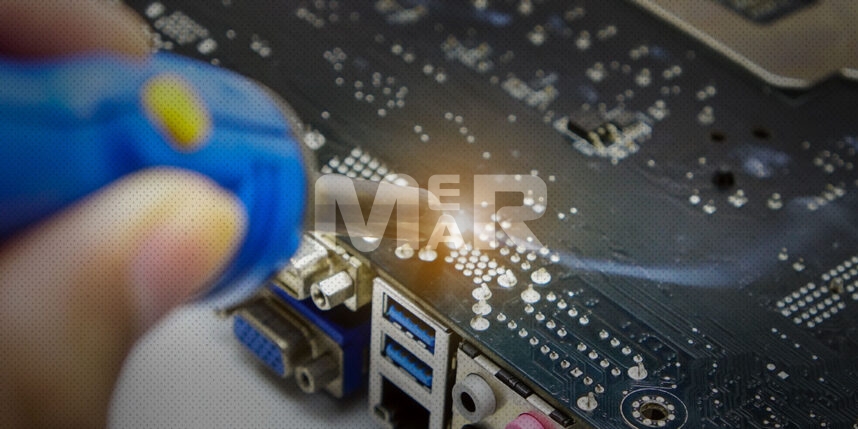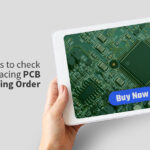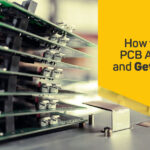A Complete Guide on PCB Soldering Process!

Soldering is an essential process that helps fasten components onto a PCB. The right soldering can make a huge impact on the quality as well as the performance of the custom printed circuit boards. In this article, we have explained what the PCB soldering process is, the types of soldering process; and how it can be done.
There are different types of soldering techniques as well as solders, the choice of which is critical to the success of your project. Here is a detailed overview:
Types of PCB Soldering Process
Reflow Soldering
This involves using a solder paste to temporarily attach components to their respective contact pads. Post this, the assembly is subject to controlled heat. The process of reflow soldering involves the following steps:
- Application of the solder paste.
- Preheating the board to bring it to the required temperature.
- Thermal Soak so that areas that weren’t adequately heated come to the required temperature.
- Reflow process to create the necessary solder joints and remove volatiles.
- Cooling to prevent thermal shock and excessive intermetallic formation on the board.
Wave soldering
This is a large-scale soldering process wherein electronic components are soldered to create an electronic assembly. This process involves passing the PCB over a pan that contains molten solder. It is important to maintain the right temperature during wave soldering. There also needs to be adequate pre-heating as otherwise, the board is susceptible to stress.
The steps involved in wave soldering include:
- Melting the solder
- Cleaning of Components
- Placement of components
- Application of solder
- Cleaning of the board
The ideal temperature during wave soldering ranges between 240-250°C.
Wave Soldering Vs. Reflow Soldering
The type of soldering you go with depends on a wide variety of factors including but not limited to:
- Shape of the pads
- The available time
- Component orientations
- Type of PCB, and more.
In some ways, wave soldering is more complex as its success depends upon creating the right environment. Board temperature and the time the board spends in the solder wave need to be monitored. However, wave soldering is also faster and more cost-effective as opposed to reflow soldering. Reflow soldering is however more suited to be used in small-scale manufacturing while wave soldering is suited for large scale production.
Explore the reflow soldering v/s wave soldering in detail.
Types of solder
Other than the soldering process, what is also critical is the choice of solder. Some of the solder types that are increasingly used include:
Lead alloy solder – It is a mixture of 60 percent tin and 40 percent lead.
Lead-free solder – Given the impact of lead on the environment, the use of lead-free solder has been growing. In fact, the EU has restricted the use of lead in consumer goods.
Silver alloy solder – These emerged as alternatives to lead solder and contain between 3-5 percent of silver.
Some Common Problems in PCB soldering process
Some common problems that one needs to watch out for in the soldering process, include:
Interfered joints
These joints result on account of movement during solder solidification. As a result, the joint appears crystalline and rough.
Cold joint/overheated joints
These result if the optimal temperature isn’t maintained or if the duration of heating isn’t long enough.
Excessive solder
If there is application of too much solder it results in bubble-like solder balls. In turn, they impact the functionality of the board.
Insufficient wetting
A badly wet joint results in poor connections and impairs the overall performance of the circuit.
Solder hunger
This refers to a situation where insufficient solder is used. In turn, it leads to poor electrical contact between the parts of the circuit
Untrimmed leads
If the leads aren’t trimmed to the required lengths, there can be the risk of short circuit as the leads can come in contact with the rest of the charges.
Points to be kept in mind during PCB soldering process
#1. Heat dissipation during assembly
It is important to effectively monitor heat dissipation during assembly and to ensure that the circuit’s components remain below the required temperature limits.
#2. Keep the soldering iron tip clean
If the soldering iron tip isn’t kept clean, you can run into a number of issues including low heat transfer leading to soldering issues.
#3. The sequence of welding parts
It is important for designers to understand the right sequence of affixing the various components.
#4. Removal of residue
Once the soldering process is complete, you are left with the flux. This needs to be thoroughly cleaned as otherwise it can lead to low voltage insulation short.
#5. Soldering SMT resistors and capacitors
Soldering resistors and capacitors is a challenging task. Experienced PCB designers can make a great deal of difference in this process.
#6. Continuity and Sensor Output
It is imperative to undertake testing for continuity and sensor output to ensure that there are no malfunctions.
To Sum Up
The right soldering is a matter of precision and having enough experience and access to soldering best practices. It is important, therefore, to go with the right partner who can make a difference to the project.
Mer-Mar Electronics is one of the leading PCB manufacturing companies, providing all in one PCB assembly and fabrication solutions. Our consistent quality & quick turnaround endear itself to our customers, who look on us as a one-stop shop for all their PCB manufacturing requirements. In case you have any questions or require more information about our PCB manufacturing services, contact us via email at sales@mermarinc.com or call us on (760) 244-6149.








